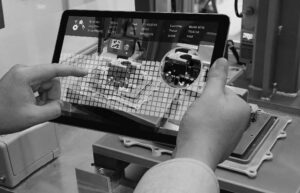We’ve spotted five trends that will have a lasting impact on engineers and their discipline in the GCC. Any debate about what is influencing the direction of contemporary engineering in the GCC could easily sound like it’s happening in Silicon Valley, rather than a typical consultant’s office or on a local construction site. But there’s no doubt that innovations once confined to the tech world are rapidly emerging as tools for building the real one. As these technologies become an integral part of the discipline, they are having an impact on how engineers work and businesses run. The uptake of some is being driven by government policy, others by market demand. Either way we’ve picked out five trends we believe are set to have a lasting effect on the industry and its practitioners in the GCC.
1. Virtual & augmented reality

Perhaps the most tech-centric of the trends we picked the potential power of virtual and augmented reality in engineering is just starting to be tapped. Too readily dismissed as a gimmick thanks to clunky glasses and awkward demonstrations, naysayers are missing the potential. When paired with the likes of building information modelling (BIM) software the technology could open up new viewpoints on designs in progress, help engineers to spot problems early and troubleshoot more intuitively. The result could be a time-saving tool that can bring designs to life without a hammer being lifted.
2. Internet of Things (IoT)

Over the last few years we’ve heard a lot about the development of smart buildings and cities. The Internet of Things, or IoT for short, is a key enabling technology that will help make our smart ambitions real. Essentially made up of a remote network of devices with varying levels of sensor capability, the IoT is also set to be a product-rich field. While we can expect the technology to have a big impact on the data gathered from the built environment, it’s also going to increase the need for engineers to have great product knowledge when it comes time to specify equipment or manage installations.
3. 3D printing

With Dubai’s government the first in the region to set ambitious targets to have every new building 25 per cent 3D printed by 2025, the need to master applications of this technology is urgent. Engineers across the GCC will be watching to see how hard targets are implemented come 2019. To ready themselves the engineering community has to prepare not only with knowledge, but also with rapid prototyping printers that will allow testing to happen at a small scale. Much like virtual and augmented reality advances, one of the knock on benefits of the 3D printing is likely to push more firms to adopt BIM. With the technologies looking likely to be intrinsically linked it could present a great opportunity for BIM experts to add to their capabilities and stand out from the crowd.
4. Localized sustainability knowledge

Mandatory sustainable building standards continue to toughen up, which means the engineering community needs to stay on top of changes happening in what is a dynamic regulatory environment. International measures of sustainability, such as LEED and BREEAM, are gradually being supplanted by locally developed systems that respond to regional environmental pressures. As new regulations add to the knowledge base engineers have to master to create and maintain a sustainable built environment, finding easy ways to keep up with the changes will be vital.
5. Continuing professional development

The rapid emergence of new engineering technologies and practices could be widening the existing skills gap. It’s a subject that usually comes up when talking about graduate engineers being ready to enter the workforce, or getting enough students interested in STEM subjects. But as the pace of change increases working professionals can find themselves slipping behind, placing more demand on the need to update skill sets. Keeping engineering skills up to speed and staying on top of new technological developments will be critical to staying out of that skills gap.
COURTESY:
www.TheBIG5.AE



GIPHY App Key not set. Please check settings